How to Eliminate Resistance to Change with Userlane

Change management processes revolve around communication, leadership, and adoption while dealing with resistance to change. It’s important, therefore, to structure change management processes in such a way to proactively deal with constraints that derive from the lack of acceptance.
Digital transformation requires a dramatic change in mentality when it comes to strategy and alignment. That’s why change is inevitable and every business is adapting to the new outcome-based economy that revolves around a 360-degree customer view to provide an exceptional customer experience.
According to Gartner, one of the most common hurdles in digital transformation is dealing with internal resistance to change.
So, what can you do to cope with resistance and facilitate change ?
Resistance to change is mainly an effort to maintain the status quo and resistance is a behavior put up to protect an individual from the perceived effects of a real or imagined threat. (Carr et al)
Getting managers to commit to a new approach is often perceived as a huge obstacle in digitization, but the main issue actually seems to be getting people on board with new guidelines, processes, and tools.
As leadership teams address change within an organization, there are many factors that may impact success, such as receiving support from the top filtering through to the base-level employee, consistent communication, a clear vision, employee performance and engagement, and an active dialogue throughout the process.
And while we all agree that change will happen, whether we want it to or not, it doesn’t mean that everyone is open and willing to adapt. Change requires active processes, which begin with motivational triggers. We are creatures of comfort, and sometimes, it’s simply much easier to stick to what we have and know than to tread into the unknown.
Table of Contents
The Natural Response to Change
As employees are introduced to change, many staff members may exhibit denial and resistance, and it is, therefore, only natural for employee productivity and morale to decrease.
The main stages that characterize a general response to change are clearly represented in the Kübler-Ross Model – a model we often refer to when talking about change processes.
The Change Curve, developed by psychiatrist Elisabeth Kübler-Ross, depicts different stages that characterize change.
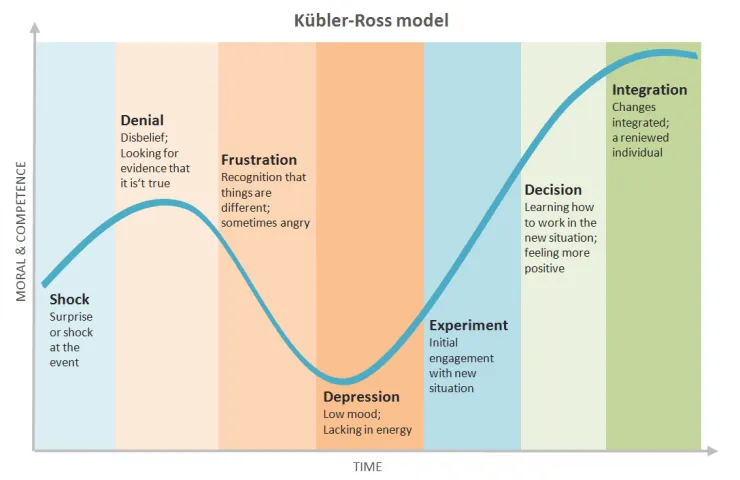
The model is often used by change leaders worldwide to pinpoint and tackle specific issues at different stages of the change management process.
To address the sometimes hostile denial and resistance phases, the leadership team needs to put in place a clear, unambiguous plan of action and communicate the plan consistently and effectively to the team. And, as mentioned, in organizing the plan, it is important to anticipate resistance from the team and pinpoint sources of opposition to determine the path of least resistance.
Since change can be overwhelming, especially when requiring a completely different business approach, organizations need to mitigate those factors that cause resistance to change and facilitate a smoother transition from reluctance to exploration and, finally, to commitment.
The First Steps in Tackling Resistance to Change
According to the ADKAR Model, the main stages of change involve:
- Awareness (change is needed)
- Desire (to support change and adapt)
- Knowledge (how to actually implement change)
- Ability (skills and behaviors)
- Reinforcement (to create a new habit/routine)
When it comes to digital transformation, many companies fail to provide the rationale behind why change is necessary.
And because of this, not enough awareness is generated, and, consequently, there will be no motivation or desire to adapt to this change.
Additionally, employees struggle to adapt because they feel as though they lack capabilities and know-how.
The transformation journey starts by clearly educating people on WHY change is necessary while making sure that everyone understands the potential gains.
Many companies use mottos to name their change management programs and create positive associations with transformative processes. In some cases, organizations use acronyms, values, or key visuals to present the three to five essential elements that will characterize the new course.
Such internal campaigns aim to generate both awareness and desire. The key element to consider: Always connect change to a desirable end-state that involves everybody so as to create goals people will actually want to support. Essentially, you need to proactively address the obvious question: “What’s in for me?”
Supporting the program with enough promotional and informational documentation (by possibly avoiding both dry slides full of bullet points or cheesy stock photos of happy employees pointing at fake charts!) is an important element that also leads to a lower resistance to change.
Generating awareness and desire is difficult, no doubt about it. But a well thought-out plan combined with the right communication strategy will help you get people on board.
The Road from Acceptance to Adoption and Commitment
Now it’s time for education, execution, and adoption.
When it comes to tracking progress, organizations tend to create project management checklists and programs with the support of change management software. That’s because having a complete overview of initiatives, stakeholders, and results is paramount.
Every initiative is connected to education, and in order to educate people on concepts and promote new skills, companies leverage modern e-learning solutions, which allow them to create centralized educational programs at scale.
Such solutions allow training and development teams to collect and distribute content while monitoring the learning pathway and its outcomes.
Technology and Resistance to Change
By-products of digital transformation are digitalization and digitization.
Digital transformation is all about people and their experience. The process is necessary to craft meaningful micro-moments that support customers through different touch points in the customer journey to allow them to achieve their goals effortlessly.
But in order to create meaningful experiences, companies need to collect and process data and use it in a fast way to optimize and personalize their customer journey and experience while monitoring outcomes and collecting direct or indirect feedback.
To achieve a 360° view of the entire journey and create processes that revolve around customer expectations, it is necessary to digitally combine online and offline information and introduce the right technology stack that allows people to execute on the strategy.
Digital transformation demands digital technology and a workforce which presents enough digital dexterity to quickly adapt to every new application.
Centralized digital processes and flexible work environments are forcing us to interact with more and more applications on a daily basis.
Think of how mobility, modern collaboration tools, employee apps, and remote working are changing our daily habits and shaping the future of work.
To be “highly skilled” nowadays implies having digital capabilities. Therefore, digital adoption is the make-or-break factor that leads from resistance to change to exploration and finally commitment and execution.
In an article for Forbes on resisting technology in the workplace, Dr Saskia Bayerl, Associate Professor in the Department of Organisation and Personnel Management at RSM, questions why so many managers have “war stories” about how challenging it is to get employees to embrace new technology, even when the technology is helpful and enabling. The problem is that transformation is an ongoing process.
The implementation of new workplace technology will never be a one-off event. – Dr Saskia Bayerl
Employees require continuous performance support to keep engaging with new technology.
IT services can’t simply roll out new applications and hope that employees will invest time and energy to completely change their habits and learn new ways to accomplish tasks.
At the same time, when it comes to technology, one-off training sessions are often perceived as irrelevant (lots of generic one-size-fits-all information, the majority of which doesn’t relate to actual daily tasks and challenges people face) and ineffective (since education is asynchronous and affected by issues related to the forgetting curve).

Why Organizations Fail When Introducing New Technology
As discussed, introducing new technology at work requires companies to devise a comprehensive communication strategy that motivates people to embrace change. But once they get the buy-in from their staff, the actual implementation plan often fails due to:
- A lack of continuous performance support
- Low user adoption (in terms of both engagement and habit formation)
- Training performance (relevance and personalization of training materials)
- A weak knowledge-transfer strategy that slows down roll outs
- An inability to scale training and support operations
- Pressure on employees (performance and operating standards)
- A lack of clear standard operating procedures
When it comes to implementing new applications, top management is, quite obviously, more likely to focus on the innovation’s effect on the bottom line by monitoring return on investment and paybacks.
But due to the risks listed above, introducing new technology in the workplace often fails because of resistance to change and a lack of adoption that impact ROI starting from pilot projects and POCs.
And this is where Userlane comes in.
Userlane, with its Digital Adoption Platform (DAP) based on an interactive Electronic Performance Support Solution (EPSS), helps organizations overcome all the challenges that impact software adoption and supports enterprises by mitigating resistance to change and the reluctance to accept new technology at work.
How Userlane Helps Organizations Eliminate Resistance to Change
Userlane is a guidance layer that goes on top of every other software application to guide users step-by-step through digital processes by showing users how to accomplish tasks directly in the software they’re using.
Userlane acts as a navigation system for software that steers users in real time through in-app processes while they accomplish tasks. It’s essentially like having an expert (for each single software application, proprietary or not) sitting next to every employee who shows them what to do to achieve their goals.
Userlane’s Digital Adoption Platform achieves this with interactive guides and electronic performance support that delivers just-in time contextual help based on behavior.
Additionally, Userlane offers users an on-screen digital assistant that provides constant assistance on-demand.
Here’s how Userlane mitigates resistance to change and supports change management processes by addressing all the constraints listed above.
1. Fighting Resistance to Change with Continuous Performance Support
Unlike one-off training sessions, handbooks, video tutorials or other training materials, Userlane is always available directly within the application users are operating.
Interactive training tours can be used to onboard new users with automatic behavior-based or segmentation-driven triggers that start contextual guides automatically.
But Userlane also provides digital environments with an in-app Virtual Assistant that is always present to guide users from A to B through all processes, irrespective of their level of complexity.
Userlane’s Virtual Assistant enhances the human experience by removing uncertainty and creating a safe environment, which, in turn, fosters engagement and experimentation.
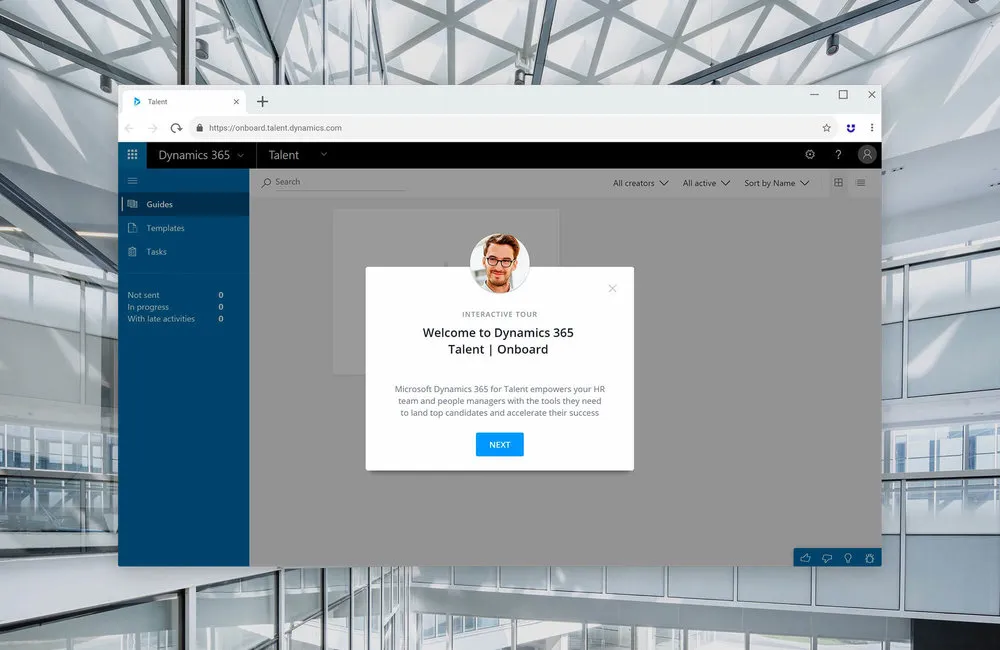
2. Immediate and Permanent User Adoption
One of Userlane’s core beliefs is that people shouldn’t have to adapt to software. It should be software that adapts to people. After all, we created technology to enhance our own performance and to serve its purpose, software interfaces can’t represent an obstacle.
And this is why Userlane takes a different approach to both software and digital adoption. By offering users a fully immersive and interactive experience that creates a smooth, intuitive process, users become experts in any application they are required to operate.
Userlane is designed to create discovery journeys which motivate users to explore and test features in a new environment with specific triggers that have been created to make sure that users engage with new digital functions.
Additionally, Userlane creates specific patterns that lead to habit formation with checklists and gamification techniques that enable users to create a new routine without being forced to adapt to a new digital environment.
Full adoption occurs when users feel comfortable with all the key features of a software solution and its advanced functionality.
At this stage, users experience the true benefits of using a new application and adopt such advanced features in their daily routine to speed-up and optimize processes.
Without proper guidance, users tend to shy away from complex features and, as a result, don’t see the potential impact that a particular application can have.
Once users realize the true value provided by new digital processes, they’re more likely to accept and commit to new technology.
User adoption is also connected to the user experience. A poor UX often leads to frustration and can make users abandon the software entirely. And with this frustration comes other undesirable consequences, such as loss in productivity.
On average, employees spend 22 minutes a day trying to figure out how to accomplish tasks in software applications.
And this might also involve asking colleagues questions and having two or more people who can’t be fully productive due to the inability to perform their tasks.
With on-screen interactive guides and step-by-step contextual help, software users can perform digital tasks smoothly, leaving them feeling empowered and giving them a sense of achievement.
Userlane fights resistance to change by enabling and motivating employees, creating a self-serving platform for support that fosters self-sufficiency and adoption.
3. Relevant and Personalized Learning Experience
When it comes to learning a new software with a one-size-fits-all solution, users often complain about the fact that the information they’re required to take in is often not relevant to their specific needs.
It’s important to keep in mind that different software users have different goals and expectations based on their roles and what they need and want to achieve.
This is why Userlane allows you to segment employees based on, for instance, level of proficiency, role, level of authority, goals, or in-app behavior. This segmentation, in turn, creates personalized journeys that guide each user through relevant processes in real time.
You can, therefore, offer tailored in-software training and support for admins that differs from interactive guidance that normal users receive.
Looking at roles, think of how differently an HR manager uses an HCM solution, such as Workday, compared to senior managers or employees in other departments.
With Userlane, you can create interactive guidance for each different segment and make sure that the information users receive is always related to the goal they need to achieve.
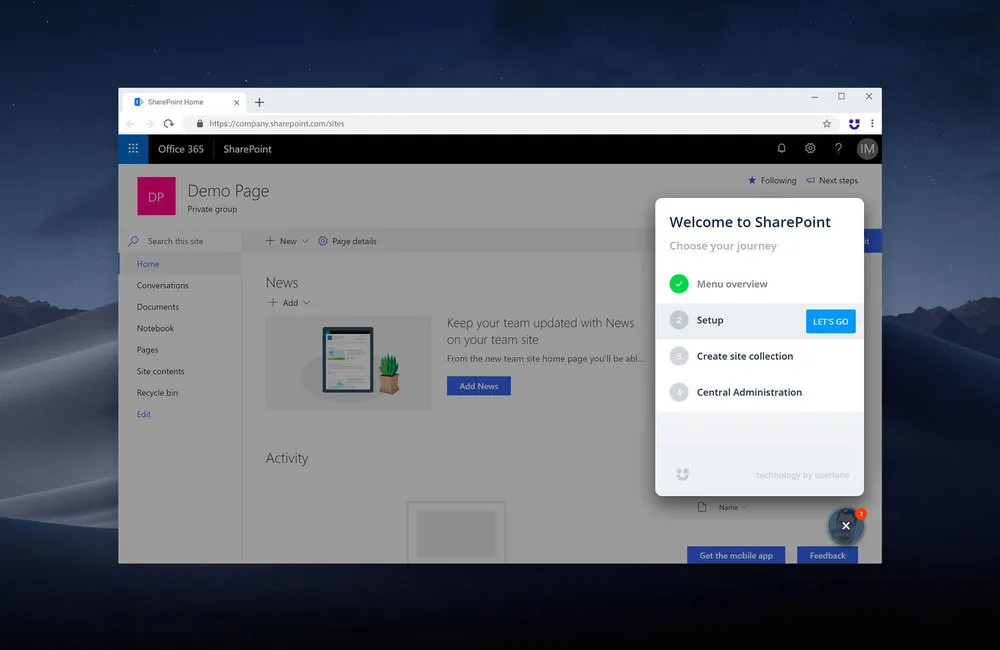
4. Mitigating Resistance to Change Through Continuous Micro-Learning Experiences
Userlane automates software adoption with in-app interactive training and support. Employees learn by doing and go through several micro-learning experiences everytime they access software.
Learning occurs organically and each employee improves at their own pace directly at their desk anytime they’re in the software environment they need to master.
The more complex an application is, the more functions it presents. And since we don’t need all the features every single day, it often happens that we end up forgetting how to accomplish specific tasks, despite training courses and tests.
Userlane is designed to fight issues connected to the forgetting curve and improve knowledge retention through a learning-by-doing approach.
Micro-learning allows us to absorb large amounts of information and acquire skills while breaking down complex processes into digestible portions.
Resistance to change is often driven by the sheer amount of new information we’re required to process in a very short space of time and the need for continuous re-training that also derives from the fast pace which characterizes release cycles of modern software applications.
By immediately enabling employees to use software instead of training users on how to use software, you can create a smooth employee experience that leads to software adoption.
5. Scaling IT Training with In-App Contextual Help
Userlane democratizes software, allowing anyone to use any software, regardless of their previous experience.
All employees can be trained in a software application simultaneously: There is no need to be in one place to learn a new application. And as mentioned already, all learning happens in-app.
Companies no longer need to go through all the logistics efforts connected to organizing training classes or produce extra documents, training manuals, or tutorials for users to consult.
As you know, content creation for training material is time-consuming and obsolescence becomes an issue with every software update. This forces companies to invest a huge amount of resources in maintaining their documentation.
With Userlane, interactive guides steer users directly within the user interface they need to interact with and it doesn’t matter if you have 500 or 50,000 users scattered around the world: Everyone has access to the same guides adapted to their own language.
Rolling out new software applications or migrating to cloud solutions can occur overnight as every user will be trained simultaneously, directly in the new application while they actually accomplish tasks.
Userlane supports change management processes by allowing companies to introduce new processes quickly and efficiently.
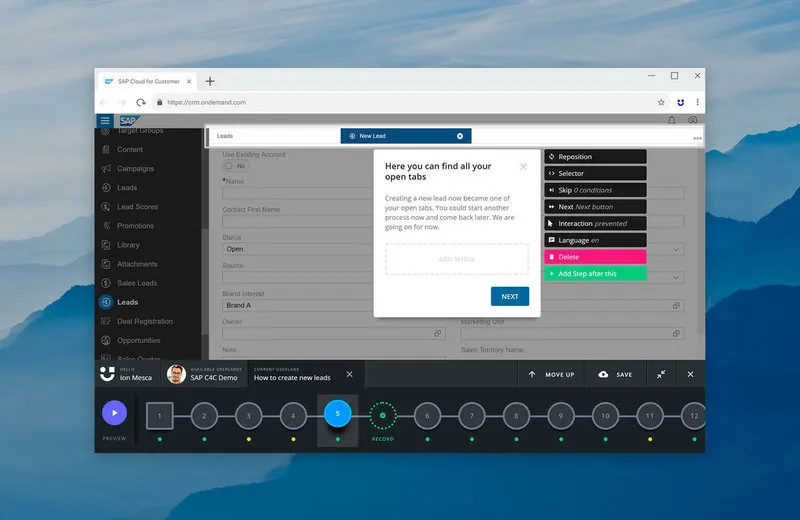
6. Implementing an Effective Knowledge Transfer Program
Switching to a new software solution effortlessly also means speeding up rollout operations.
Userlane is suitable to automate DBA and TTT training programs by creating a centralized repository of software know-how in the form of interactive guides.
Instructional designers, IT trainers, and learning and development professionals can utilize Userlane to maximize and standardize knowledge transfer at different stages of the software implementation project.
With interactive guidance, time-to-competency for both admins and end-users drops down to zero and consequently, efficiency and speed of software implementation projects increases.
7. Eliminating Resistance to Change by Eliminating Pressure and Fear
What makes Userlane truly unique is that the interactive guides intelligently and proactively prevent procedural mistakes, thus removing the classic insecurity we all experience when trying out new applications.
Exploration and experimentation are always hindered by fear of the unknown, and Userlane often represents a safety blanket that makes users comfortable when they attempt tasks for the first time on their own.
Success drives motivation, and Userlane guarantees this motivation by gradually exposing users to complexity. Progressive exposure to complexity is the key to creating a safe environment for users who test features and feel interested in knowing more.
This exploration mode leads to the discovery of new features, and because interactive guides enable users to adopt features easily and quickly, users will want to continue learning more. In other words, users will WANT to learn and not just because they HAVE to learn.
Interactive support is continuous and contextual: Users will always have just-in-time help on hand and they will only need to learn a new process at “just the right time”.
8. Creating a Bedrock for Standard Operating Procedures
Userlane provides more transparency in terms of training, ensures compliance, and can help companies explain their business processes with more clarity while users are actively performing tasks.
Understanding and operating software applications is just the tip of the iceberg, though. In such complex environments, different organizations expect employees to adhere to procedural rules linked to customization and company guidelines.
It’s one thing to teach account executives how to manage Salesforce, for example, but making sure that they all comply with specific SOPs when filling out account information or reports is a different topic.
Resistance to change often occurs after people have already invested time and energy in learning a process which now isn’t mirrored in the new way they need to operate.
Instead of teaching people processes and requesting them to adapt (which requires a long time), organizations can simply create in-app guides that automatically lead users to comply with standard guidelines.
And if something needs to be adapted or changed, process owners only need to update their interactive guides to promote new procedures.
Again, the most important component in change management is communication. It’s therefore important to justify changes and explain why adjustments have been implemented to create acceptance.
Userlane then kicks in and automatically removes initial resistance to change by guiding people through new processes.
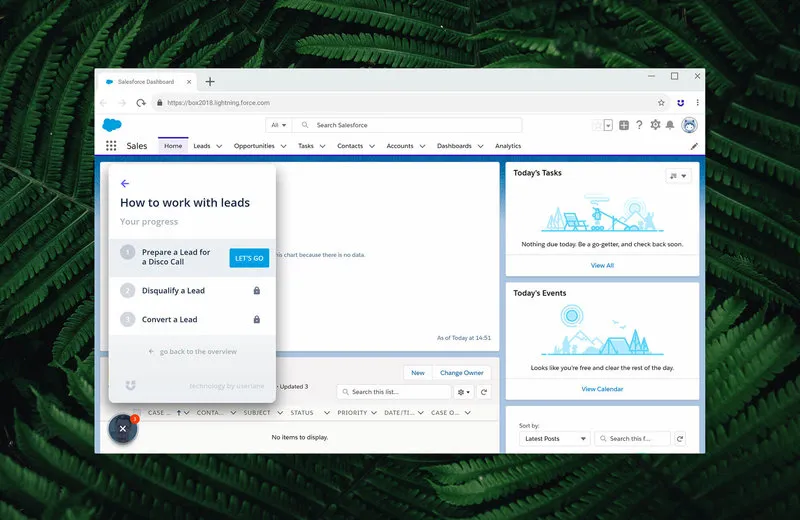
Winning Communication Strategy + Userlane: The Perfect Combination to Eliminate Resistance to Change
Digital transformation is about personalized human experiences. Data collection and utilization are ways in which companies boost customer intimacy and customer journey optimization.
The success of change management processes is directly connected to effective communication that promotes a radical shift in mentality.
Technology is just a tool that allows companies to execute their new strategy.
And being digital is no longer enough: Organizations and employees need to be prepared for continuous change and disruptions. This is only achieved by understanding the rationale behind change and making sure you get the right support to immediately adapt to new processes.
With interactive guidance, software training becomes empowering, organic, and effortless.
Communication drives awareness and desire, while electronic performance support guarantees knowledge, ability, and reinforcement in the ADKAR change management model.
With a positive experience from the very start, users are motivated to continue exploring the new software application and interact with more complex features while relying on the constant support of their on-screen digital assistant.
This eliminates uncertainty and insecurity leading to experimentation, commitment, and habit formation (commitment).
Userlane is a powerful Digital Adoption Platform with a functionality that revolves around a positive human experience.
That’s why large organizations worldwide already use our software to fight resistance to change and drive software adoption.
Find out more by reading how Userlane helped Deutsche Bahn with a fivefold increase in productivity through immediate software adoption.

